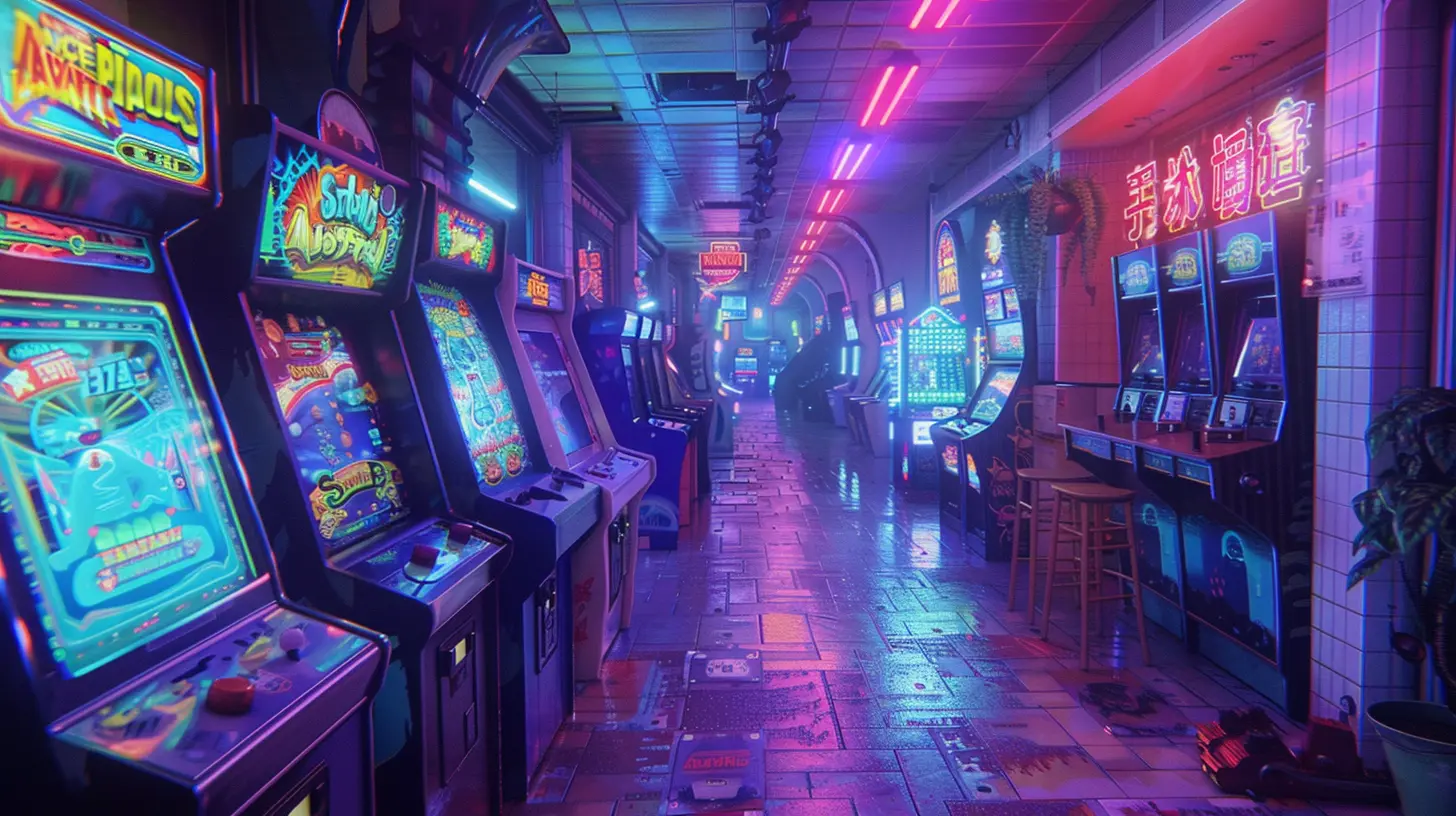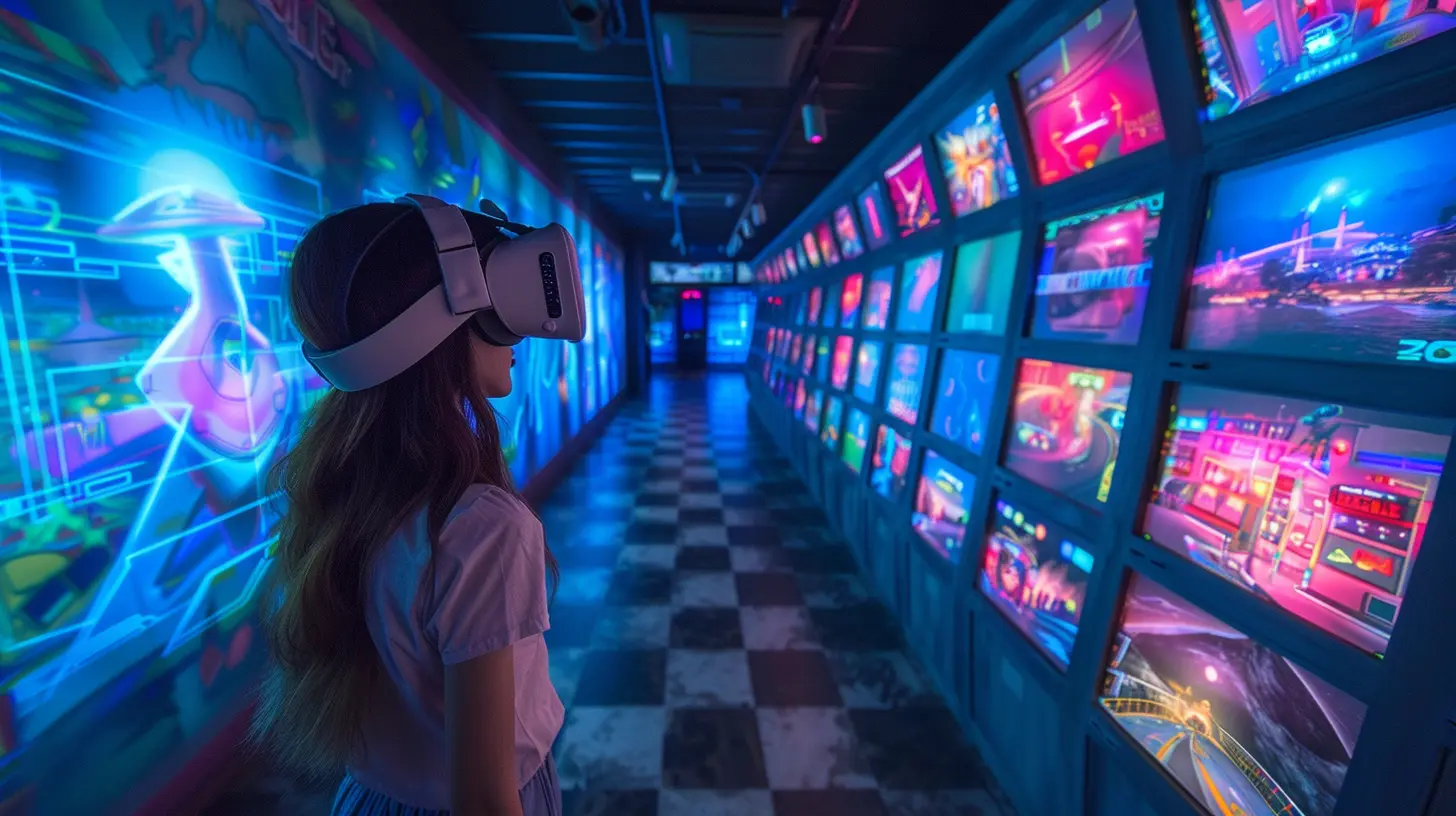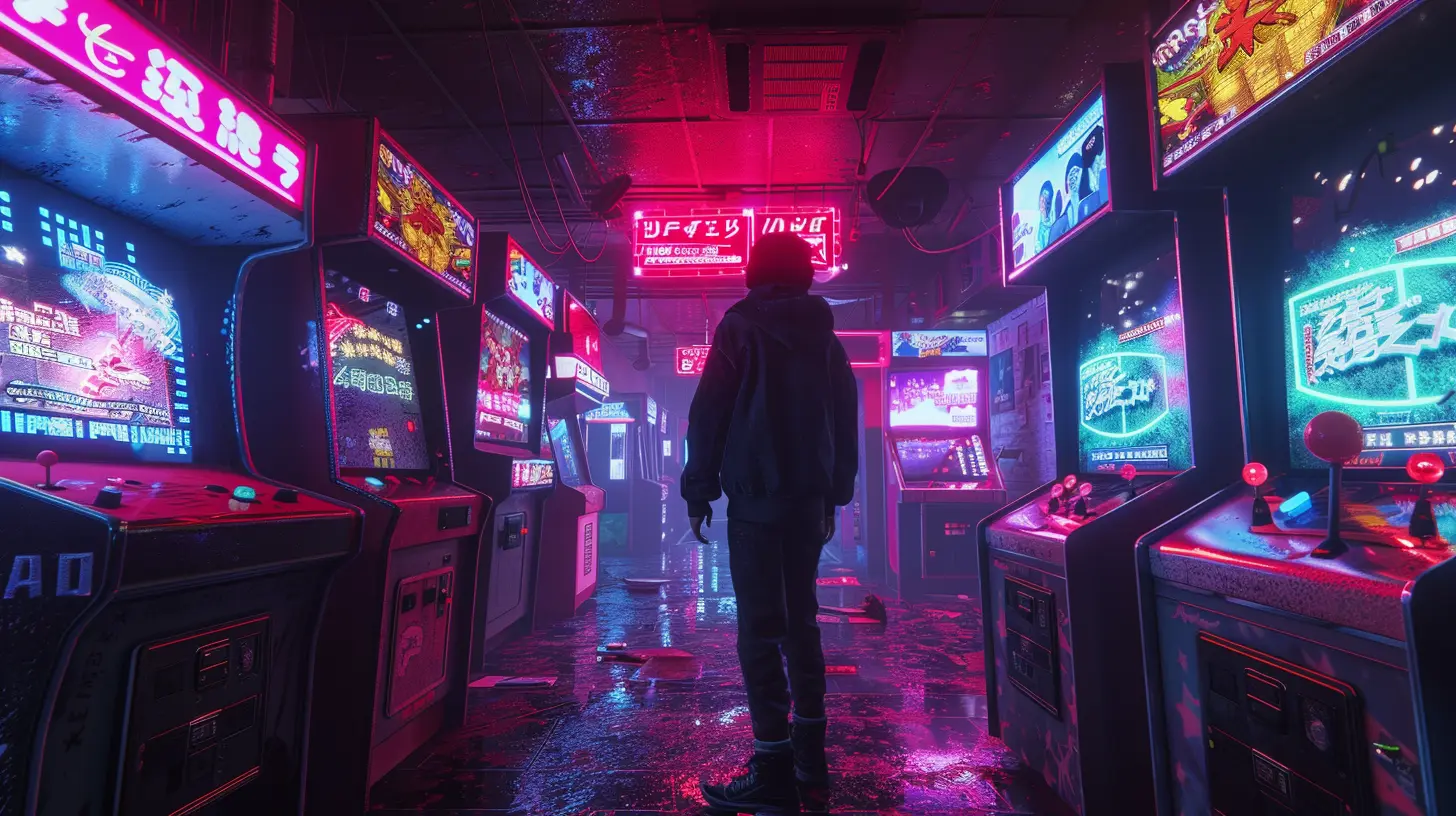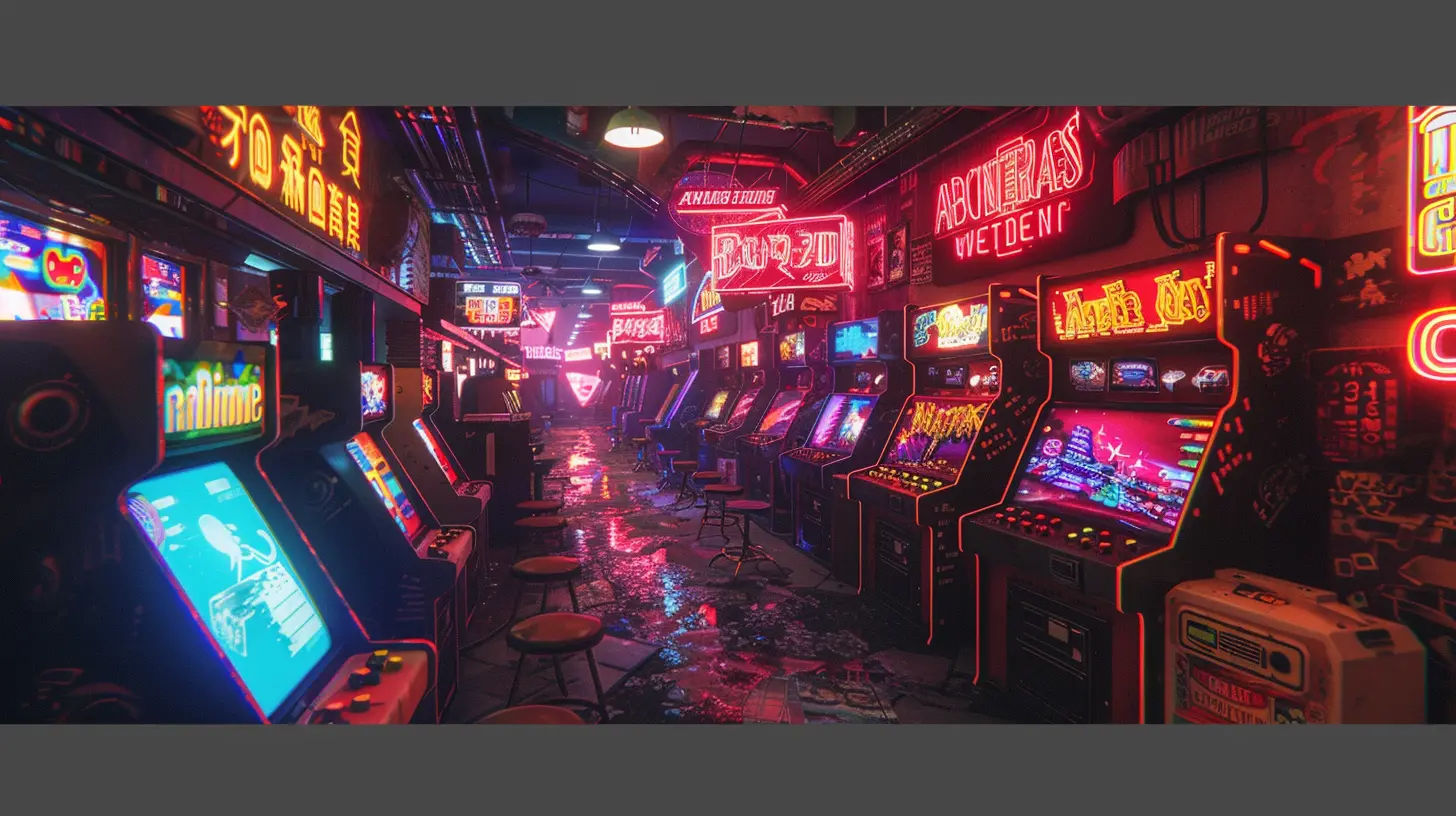Arcade Adventure: Exploring Virtual Reality’s Role in Arcades
25 July 2025
Remember when arcades were the go-to hangout spot? The smell of popcorn, the sound of buttons mashing, and the neon glow of game cabinets all around—it was a vibe. Well, fast-forward to today, and arcades aren’t dead; they’ve evolved. And guess what’s leading this evolution? That's right—Virtual Reality (VR).
From clunky goggles to untethered immersion, VR is breathing new life into arcades, transforming them from nostalgia-fueled throwbacks into futuristic funhouses. Buckle up, because we’re diving head-first into the wild world of VR-powered arcade adventures and unpacking what’s really going on behind the headset.
The Evolution of Arcades: A Quick Flashback
Before we get into the juicy VR stuff, let’s roll back the clock for a sec. Arcades were huge in the ’80s and ’90s. They were the social networks of their time—places to chill, show off your skills, and maybe even impress your crush with a Street Fighter combo.But then, home consoles got better. And smartphones? Well, they slipped whole gaming universes into our pockets. Slowly, arcades started fading. The glitz and the buzz lost their charm. People stopped feeding quarters into machines because they had better, cheaper, easier options at home.
So, what could possibly bring folks back?
Enter: VR.
Why VR and Arcades Make the Perfect Match
VR didn’t just stumble into arcades. It fits like a glove—and here's why:1. Immersion That Home Setups Can’t Beat
Let’s be real. While home VR is cool, it still pales compared to the full-blown rigs you find in modern arcades. We’re talking about haptic suits, motion platforms, wind simulators, and even treadmills. These setups take virtual experiences to a different level—something you just can’t recreate in your living room unless you’re a millionaire with space to spare.2. Social Experience, Upgraded
Arcades were always social—but VR turns that interaction up a notch. Imagine teaming up with friends for a zombie shootout in a warehouse-sized arena where you physically dodge, run, and scream like maniacs. That’s more than gaming; it’s an event.3. Cutting-Edge Tech Without the Heavy Price Tag
VR gear—especially the high-end kind—isn’t cheap. Arcades offer a chance to try this tech without burning a hole in your wallet. You don’t need to invest in hardware; just show up, strap in, and play.
Next-Level Gaming: Types of VR Arcade Experiences
Not all VR arcade games are made the same. In fact, the range is pretty wild. Let’s unpack a few of the most popular setups:1. VR Arenas
These are massive open spaces where multiple players navigate real-world terrain while experiencing a mapped virtual world. Think laser tag meets Ready Player One. Free-roam VR arenas are the pinnacle of arcade evolution, offering cooperative missions, PvP battles, and mind-blowing immersion. Companies like Zero Latency have perfected this craft.2. VR Pods and Booths
Got limited space? No worries. VR booths and pods are compact, single-player experiences that pack a punch. From racing sims with motion seats to rhythm-based swordplay (hello, Beat Saber!), these give you all the thrill in a bite-sized package.3. Mixed Reality Games
Some arcades even blend physical props into the digital experience. You might hold a real plastic gun that appears as a laser blaster in-game or sit in a cockpit that reacts to your virtual spaceship’s every move. It’s part real, part pixel—but all adrenaline.
How Virtual Reality is Changing the Business of Arcades
Sure, VR is fun. But it’s also flipping the script when it comes to arcade business models. Here’s how:1. Higher Revenue per Visit
People are willing to pay more for premium experiences. VR sessions usually cost more than regular arcade games—but they last longer and feel more like mini-adventures. That means more value for customers and more cash for arcade owners.2. Attracting a New Demographic
Old-school arcades mostly pulled in teens and kids. But VR? It attracts everyone—from curious adults to team-building corporate groups, even senior citizens trying out VR for the first time. The market just blew wide open.3. More Repeat Visitors
Because VR games are experience-driven, they’re constantly evolving. Arcades can switch up the content regularly, keeping things fresh and bringing customers back for new worlds to explore.Challenges in the VR Arcade Space (Yep, There Are a Few)
Let’s not sugarcoat it—VR arcades aren’t all fun and games behind the scenes. There are some fairly sticky challenges operators face:1. High Maintenance Costs
VR tech isn’t just expensive to buy—it’s expensive to maintain. Cables wear out. Headsets get sweaty. Sensors misalign. Without regular upkeep, even the coolest setup can turn into a glitchy mess.2. Space Requirements
VR experiences need room—especially the free-roam kind. For smaller arcades, that’s a tough challenge. Creators and designers are constantly trying to make the most out of limited square footage.3. Hygiene and Safety
Let’s face it—sharing gear with strangers raises hygiene questions, especially in a post-pandemic world. Thankfully, many arcades have upped their cleaning game. Anti-bacterial wipes, VR mask liners, and regular sanitation routines are now standard protocol.The Psychology Behind VR Arcade Appeal
Let’s get cerebral for a moment. Why are people flocking back to arcades just because VR is involved?1. Escapism on Steroids
VR doesn’t just let you play a game—it lets you live it. Whether you’re battling dragons or exploring Mars, VR tricks your brain into believing you’re actually there. That kind of immersion is a mental vacation from reality that’s hard to match.2. Sense of Accomplishment
VR arcade games often involve physical interaction—climbing, ducking, aiming. That kinetic involvement builds a stronger sense of achievement. You didn’t just score points; you "survived" the tower collapse. That dopamine hit? Next level.3. Shared Experiences = Stronger Bonding
When friends go through a VR mission together, it’s like they’ve gone on a digital road trip. Shared experiences in virtual space create real-world memories. That emotional connection is pure gold for both players and businesses.VR Arcades Around the World: Who’s Doing It Right?
Some arcades have taken VR and absolutely run with it. Want a peek at the best of the best?Zero Latency (Global)
With locations across the globe, Zero Latency offers free-roam VR experiences that are as polished as they come. Fighting off AI drones or navigating a haunted house—whatever your jam, they’ve got it.The VOID (USA, UK, UAE)
Known for jaw-dropping production value and AAA partnerships (think Star Wars and Marvel), The VOID offered hyper-realistic VR experiences before pausing during COVID. While its future is uncertain, the formula it created still influences others.Sandbox VR (Multiple Countries)
Small rooms, epic adventures. Sandbox VR blends tactile props with full-body tracking for a VR experience that feels like stepping into a movie.The Future of VR in Arcades: What’s Coming Next?
It’s safe to say we’re just scratching the surface. Here’s what’s likely in store for the future of VR in arcades:1. Full Body Haptics
Feel that dragon’s breath or the kick of a blaster. Next-gen suits will make you feel every impact, adding insane realism to gameplay.2. More AI Interactions
Expect smarter enemies, allies, and narratives powered by artificial intelligence. The games will adapt to your skill level and decisions, making each run unique.3. Cloud-Based VR Experiences
No more downloading giant files or relying solely on local hardware. The future could include cloud-powered VR experiences, allowing arcades to offer even more dynamic titles without needing constant upgrades.Final Thoughts: Is VR the Savior of Arcades?
In one word—absolutely.Virtual Reality isn’t just reviving the arcade scene. It’s redefining what an arcade even is. We’ve gone from simple button smashing to full-body, mind-bending adventures. VR has turned arcades into digital playgrounds where the line between real and virtual blurs.
So, next time you walk past that neon-lit VR arcade in your mall, don’t just scoff and keep walking. Step in. Strap on that headset. And prepare to be blown away. The arcade adventure is back—and it's more vivid than ever.
all images in this post were generated using AI tools
Category:
Arcade GamesAuthor:

Aurora Sharpe
Discussion
rate this article
2 comments
Faenor Bailey
Virtual reality is revolutionizing arcades—prepare for an unforgettable experience!
November 24, 2025 at 3:50 PM

Aurora Sharpe
Absolutely! Virtual reality is transforming the arcade landscape, offering immersive experiences that engage players like never before. Get ready for a whole new level of fun!
Elise McCarron
Virtual reality is revolutionizing arcades, offering immersive experiences that redefine entertainment. Embracing this technology is essential for arcades to stay relevant and attract new players.
August 8, 2025 at 4:35 PM

Aurora Sharpe
Absolutely! Virtual reality is transforming arcades by providing unique, immersive experiences that engage a new generation of players, making it crucial for arcades to adapt and thrive.


